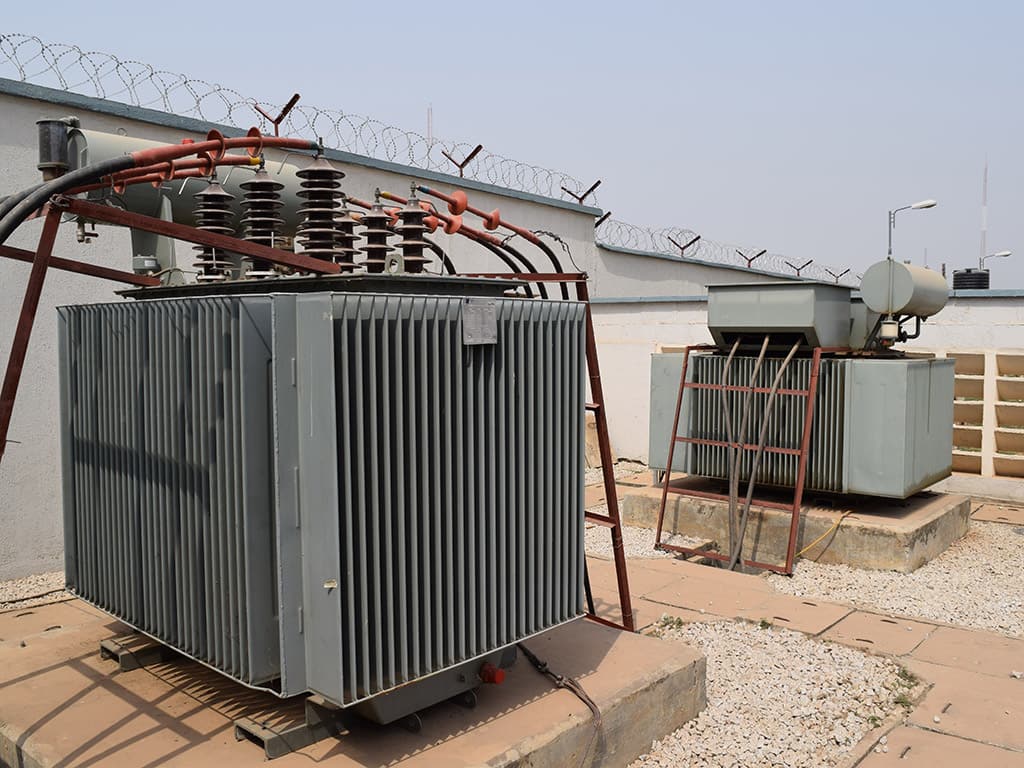2.5MVA Transformers
A distribution transformer or service transformer is a transformer that provides the final voltage transformation in the electric power distribution system, stepping down the voltage used in the distribution lines to the level used by the customer. ... If mounted on a utility pole, they are called pole-mount transformers.
-
Construction date: September, 2020
-
Location: Minna - Nigeria
The Construction of an Electrical Transformer
The three important components of an electrical transformer are a magnetic core, primary winding, and secondary winding. The primary winding is the part that is connected to an electrical source, from where magnetic flux is initially produced. These coils are insulated from each other and the main flux is induced in the primary winding from where it is passed to the magnetic core and linked to the transformer’s secondary winding through a low reluctance path.
01
The frequency of input and output power is the same
02
All transformers make use of electromagnetic induction laws
03
No moving parts are required to transfer energy, so there are no friction or windage losses as with other electrical devices.
04
The primary and secondary coils are devoid of electrical connection (except for auto transformers).





